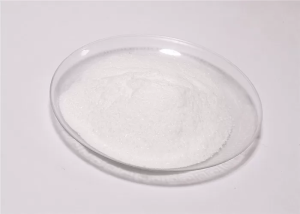
Bio-Based Succinic Acid

Specifications
| Item | Index |
| Appearance | White crystalline or powder, no visible impurities |
| Purity, w/%≥ | 99.5 |
| Moisture,w/%≤ | 0.5 |
| Iron,w/%≤ | 0.001 |
| Chloride,w/%≤ | 0.005 |
| Sulfate,w/%≤ | 0.03 |
| Residue on ignition,w/%≤ | 0.01 |
| Melting point, ℃ | 185~188 |
| Ease oxide, mL/g≤ | 0.5 |
| Pb,w/%≤ | 0.002 |
| As2O3,w/%≤ | 0.0002 |
Packing & Storage
| Packing | in 25kg bag |
| Storage | 20℃, 2 years. |
| Shipping | Room temperature in China; may vary elsewhere |
Free Quote
For samples, pricing, or more information, please call us at 0086-25-52397805 or mail to info@maleic-anhydride.net or fill out the following form. We will respond to you as soon as possible.
Tel: 0086-25-52397805
E-mail: info@maleic-anhydride.net


General Information
| Common Names | Fumaric acid | 2 – butene diacid | anti – 1, 2 – ethylene dibasic acid | E – butylene acid | ||
| Structure |  |
||
| CAS No. | 110-17-8 | Boiling Point (℃) | 355.5±25.0 °C |
| Molecular Weight | 116.072 | Melting Point (℃) | 298-300 °C |
| Appearance | White powder | Vapor Specific Gravity | 1.635 |
| HS Code | 2917190090 | Flash Point (℃) | 183.0±19.7 °C |
| Solubility | Soluble in alcohol, slightly soluble in water and ether | Autoignition Temperature (℃) | |
| Safety Phrases | |||
| RIDADR | |||
| WGK Germany | |||
| Packaging Group | |||
| Hazard Class | |||
| SYMPTOMS | PREVENTION | FIRST AID | |
| Inhalation | Cough. Sore throat. | Use local exhaust or breathing protection. | Fresh air, rest. |
| Skin | Redness. Burning sensation. Itching. | Protective gloves. | Remove contaminated clothes. Rinse and then wash skin with water and soap. |
| Eyes | Redness. Pain. | Wear safety goggles. | First rinse with plenty of water for several minutes (remove contact lenses if easily possible), then refer for medical attention. |
| Ingestion | Abdominal pain. Nausea. Vomiting. | Do not eat, drink, or smoke during work. Wash hands before eating. | Rinse mouth. Induce vomiting (ONLY IN CONSCIOUS PERSONS!). Refer for medical attention . |
Frequently Asked Questions
Application of Bio-based Succinic Acid
Bio-based succinic acid is a chemical compound that is produced through fermentation using renewable resources such as sugars or biomass. Succinic acid, also known as butanedioic acid, is a dicarboxylic acid with the molecular formula C4H6O4.
Traditionally, succinic acid has been produced from petroleum-based feedstocks. However, with growing concerns over environmental sustainability and the desire to reduce dependence on fossil fuels, there has been increasing interest in developing bio-based alternatives.
The production of bio-based succinic acid typically involves the following steps:
1. Feedstock selection: Renewable resources such as corn, sugarcane, wheat, or lignocellulosic biomass are chosen as feedstocks. These feedstocks contain sugars or carbohydrates that can be converted into succinic acid.
2. Fermentation: The selected feedstock is subjected to fermentation using microorganisms such as bacteria or yeast. The microorganisms consume the sugars and convert them into succinic acid through a series of metabolic reactions.
3. Downstream processing: After fermentation, the succinic acid is separated from the fermentation broth. This can be achieved through various techniques such as filtration, centrifugation, or extraction. The recovered succinic acid is then purified to obtain the desired product.
Bio-based succinic acid offers several advantages over its petroleum-based counterpart. It is a renewable and sustainable alternative that reduces greenhouse gas emissions and dependence on fossil fuels. It can be used as a building block for the production of a wide range of chemicals, polymers, and materials. Additionally, bio-based succinic acid is biodegradable and non-toxic, making it more environmentally friendly.
Applications of bio-based succinic acid include:
1. Chemical intermediates: Succinic acid can be further processed to produce a variety of chemicals, such as 1,4-butanediol, tetrahydrofuran, and gamma-butyrolactone, which are used in the production of polymers, resins, and solvents.
2. Polymers and materials: Succinic acid can be polymerized to produce biodegradable and bio-based polymers like polybutylene succinate (PBS), polybutylene succinate adipate (PBSA), and polyethylene succinate (PES). These polymers find applications in packaging, textiles, films, and coatings.
3. Food and beverages: Succinic acid can be used as a flavoring agent, pH regulator, and preservative in food and beverages. It is classified as a generally recognized as safe (GRAS) substance by the U.S. Food and Drug Administration (FDA).
4. Pharmaceutical and personal care products: Succinic acid is utilized in the production of pharmaceuticals, cosmetics, and personal care products. It can be used as an ingredient in topical creams, oral medications, and as a pH adjuster in skincare formulations.
Bio-based succinic acid represents a promising alternative to petroleum-based succinic acid, offering a more sustainable and environmentally friendly option for various industrial applications.

